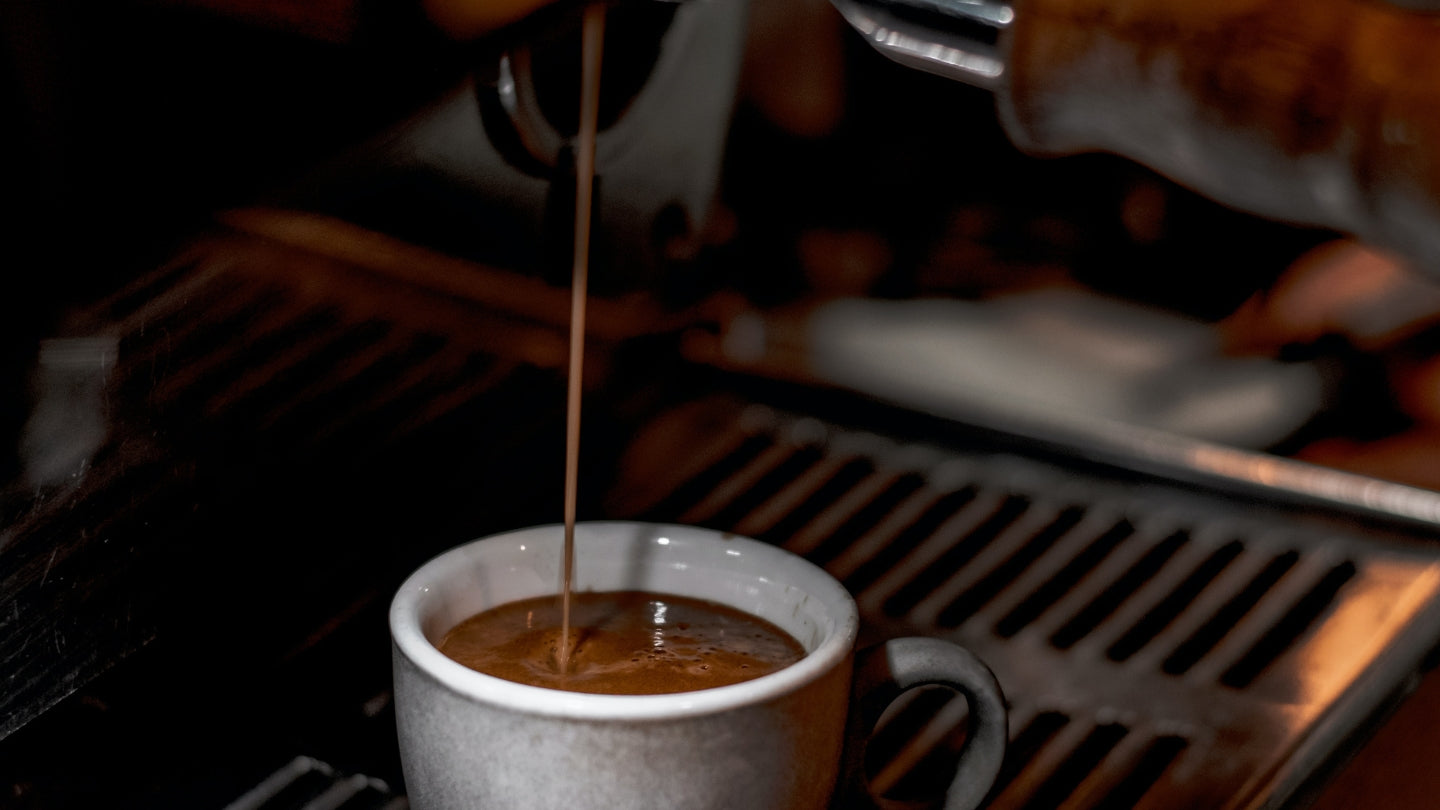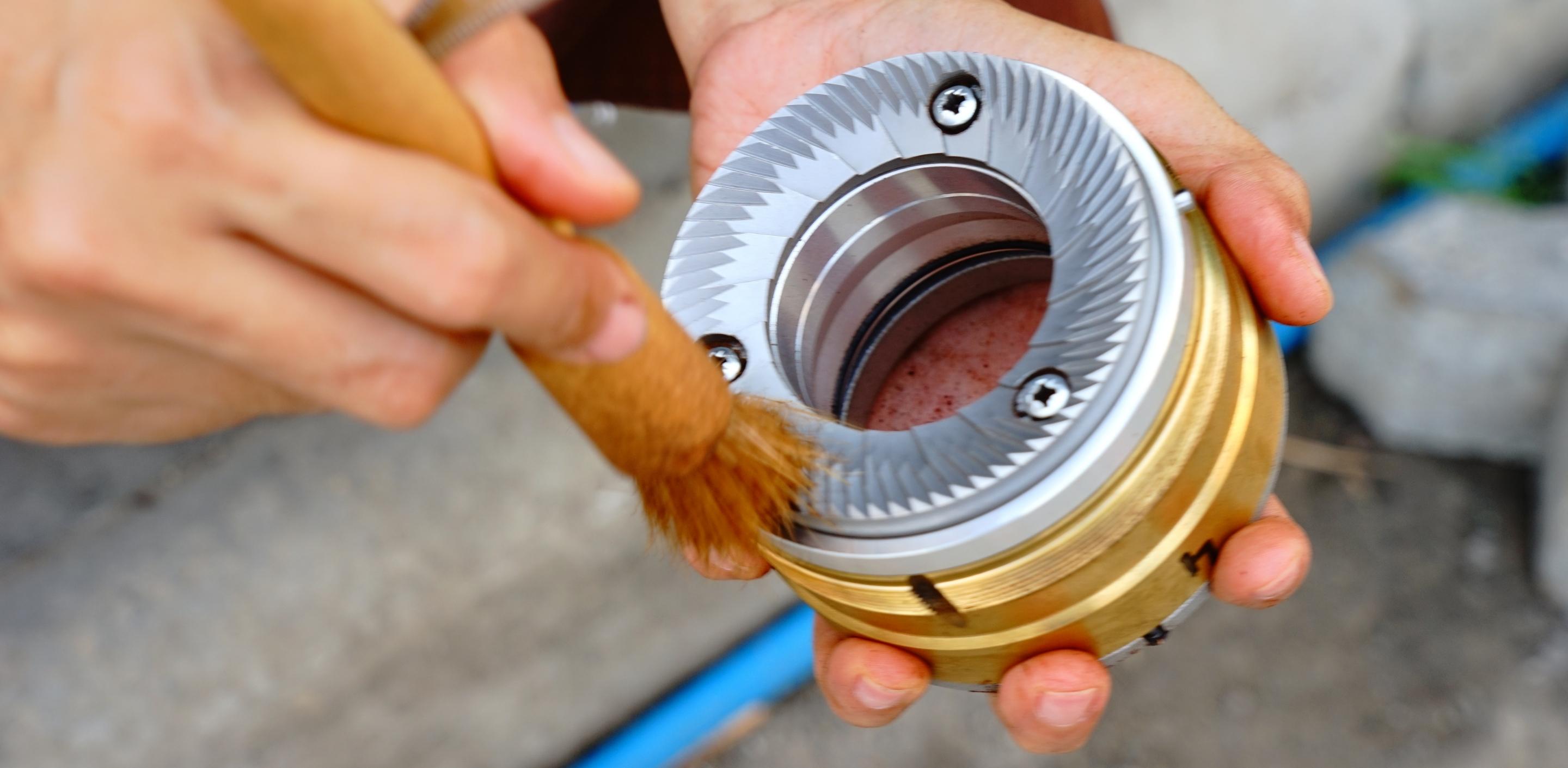Coffee Strength Explained

Strong coffee. A lot of people like coffee with some strength to it. I personally love ‘strong coffee’. But when I say my coffee is ‘strong’, it doesn’t always mean the same thing as someone else saying it.
If you’re describing strength in coffee like you would in food, you’re probably indicating that the flavour is ‘intense’ or ‘powerful’. For some people, a ‘strong coffee’ is one that feels quite viscous in their mouth. Others might even be referring to the caffeine content of their coffee when they say it is strong. When discussing the strength of coffee at work, I typically use it as a scientific term; a strong coffee is one in which the concentration or proportion of flavour compounds in an extraction is high.
Understanding both the colloquial and scientific definitions of the word ‘Strength’ is essential when it comes to discussing coffee brewing accurately. To truly know the coffee you’re drinking, and why it is the way it is, understanding the difference between strength of flavour and strength of concentration will help you compare coffees far more effectively - especially if you brew your coffee in a variety of ways.
As an example, a particular brew may have low concentration of solubles, yet still taste quite intense, or vice versa, depending on the particular coffee beans in question and on the way the brew has been made. Caffeine content isn’t necessarily highly correlated with intensity of flavour either - how much caffeine is in your coffee is almost entirely relative to how much ground coffee was used to brew it.
Describing Strength
Whenever coffee ‘strength’ is described by the coffee industry, you’ll hear terms like TDS (Total Dissolved Solids) or perhaps ppm (parts per million) bandied about. Both of these concepts are ways to describe the proportion of a liquid that is made up of dissolved soluble solids (the yummy stuff that we want to extract from the coffee beans). TDS is the common way that coffee professionals describe the Strength of an extraction, and it is represented as a percentage of the total volume of liquid.
For example, an espresso will typically be somewhere around the 10% TDS mark, give or take 2-3%. This means that about 10% of the liquid is composed of solubles extracted from the coffee beans, while the remaining ~90% is water. Similarly, a filter-style coffee will usually have between 1% to 2% TDS, while the other 98-99% is water.
Strength and Flavour Intensity
Comparing an espresso with a filtered coffee, it’s easy to see why most people think of them as strong in the colloquial sense. At no less than 5 times the TDS of a filter coffee, espresso is usually a high-intensity experience, while filter coffee is relatively milder.
When it comes to flavour perception, high intensity is not necessarily better. Perception of flavour is actually negatively correlated with higher concentrations of flavour compounds. The stronger a coffee, the harder it is to detect particular subsets of flavours, and the more likely someone is to describe the experience as intense. A weaker brew is also not necessarily a bad one - at an appropriate strength, it is far easier to perceive the individual characteristics of a coffee extraction.
Strength (concentration) and flavour intensity generally go hand in hand. An espresso with a 10% TDS is both highly concentrated (strong) and tastes very intense to most people. Filter or pour over coffee is far less concentrated, which for the majority of drinkers translates into less intensity. It’s not always a 1:1 correlation between concentration and flavour intensity though - some flavour combinations taste more intense than others, and each person’s perception of intensity varies.
Strength and Caffeine content
While many people consider a ‘strong coffee’ to be one that is high in caffeine, strength in coffee isn’t necessarily reflective of its caffeine content. In fact, the amount of caffeine in a coffee is almost entirely dependent on the amount of ground coffee used in the brewing process. Caffeine is highly water soluble, particularly at high temperatures, and this means that in most coffee brewed hot, almost all of the caffeine available gets extracted. Not so for the other soluble compounds that determine the concentration and flavour of the final brew.
The vast majority of the flavour compounds that can be extracted from coffee beans (acids, sugars, fats, and even plant fibres) require progressively longer times at temperature to become water soluble. This means that it’s possible to have a very caffeine heavy extraction without a high concentration of solubles. Generally speaking though, if your brewing is somewhat on point, there will be something of a correlation between caffeine content and strength.
The single most important thing to remember about the caffeine content in your coffee is that it’s primarily related to the dose you use, not the amount of liquid you drink. Let’s compare espresso and cold brew. An espresso is highly concentrated and tastes very intense, but for a single 20-30ml shot, the amount of caffeine is typically around 65 mg. A glass of cold brew on the other hand, might constitute 250ml of liquid, and at its lower concentration, be much less intense and really easy to drink. And yet, a single serve of cold brew is likely to contain 150 mg or more of caffeine. This difference comes down to the amount of ground coffee used to make each respective beverage.
Strength and Viscosity
Strength/Concentration (as measured by TDS) is correlated with viscosity, body, mouthfeel, weight, or simply how thick a liquid feels in your mouth. Higher TDS generally means a thicker, more viscous texture in a brew, while a lower TDS means that a brew is lighter. The coffee industry usually uses a subset of descriptors for viscosity - words such as syrupy, robust, gentle, delicate, tea-like, or buttery might be used to describe the texture, which helps to keep the terminology distinct from ‘strength’.
Espresso, being somewhere between five and ten times the TDS of pour over or cold brewed coffee, has a relatively higher thickness, but this doesn’t mean that filtered coffee can’t also have weight to it too. Espresso TDS might vary between 7 and 13 percent, and the difference in viscosity from one to the other is enormous. Most people will immediately be able to discern a difference between the heft of two such brews. Similarly, the difference in texture between a pour over coffee of 1.2% TDS and one of 1.8% TDS is quite pronounced.
The Tradeoff
The strength of an extraction affects both the intensity (and therefore the clarity) of flavour as well as its texture.
The simplest way to demonstrate this is to start with a strong brew, and gradually dilute it, tasting it for flavour along the way. For example, pull a restricted double shot of espresso and try it. The flavour will be incredibly rich, to the point where you might not taste any particular flavour notes, and the texture will be thick and syrupy. Now add hot water to the coffee bit by bit, tasting as you do. You’ll notice the flavour clarity improve as you go, as the concentration decreases, while at the same time the texture or mouthfeel will get lighter and lighter.
For most people, a satisfying coffee is one that balances their preferences for both flavour clarity and texture. Where that balance sits will be up to your individual palate. For some espresso drinkers, the appeal is the thick and viscous texture and the intensity of flavour, even if that flavour may not have a great deal of clarity, while for filter coffee aficionados, flavour clarity is often of paramount importance.
Strength and Coffee Choice
So how does TDS relate to the individual coffee that you use? Depending on a coffee’s origin and the way it has been roasted, two extractions at the same TDS (i.e. Strength) can taste completely different. The flavour intensity of a lightly roasted coffee at 10% TDS will be markedly different to that of a dark roasted one at 10% TDS.
Strength - being understood as synonymous with concentration of solubles - iis not necessarily the same as intensity of flavour. So the next time that someone describes a brew as strong, it may not mean exactly what you think - especially when it comes to this blog!
As always, the right strength for a coffee is the one that suits you the best. You might prefer the flavour clarity of a 1.2% TDS pour over, or you might enjoy the texture of a 12% TDS espresso - but whatever you like, it’s worth understanding how the parameters work together, so you can better describe and choose what you want.





Leave a comment